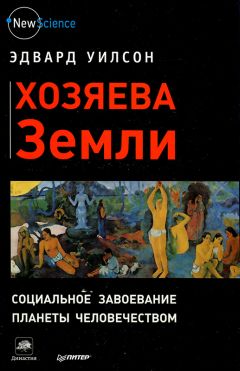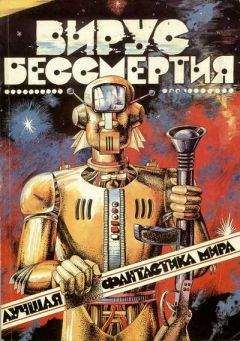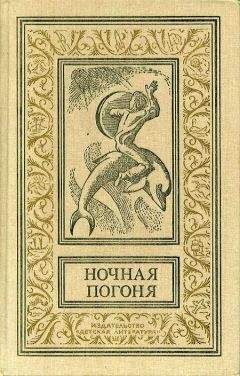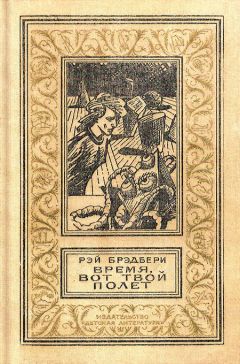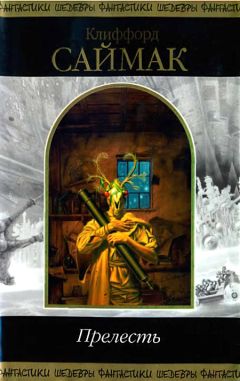Сезонные изменения способствуют общественному поведению. James H. Hunt and Gro V. Amdam, «Bivoltinism as an antecedent to eusociality in the paper wasp genus Polistes» Science 308: 264–267 (2005).
Происхождение бескрылых рабочих у муравьев. Ehab Abouheif and G. A. Wray, «Evolution of the gene network underlying wing polyphenism in ants» Science 297: 249–252 (2002).
Происхождение полигинии у огненных муравьев. Kenneth G. Ross and Laurent Keller, «Genetic control of social organization in an ant» Proceedings of the National Academy of Sciences, U.S.A. 95(24): 14232-14237 (1998).
Гены и эусоциальное поведение у огненных муравьев. M. J. B. Krieger and Kenneth G. Ross, «Identification of a major gene regulating complex social behavior» Science 295: 328–332 (2002).
Генетика и развитие общественных пчел. James H. Hunt and Gro V. Amdam, «Bivoltinism as an antecedent to eusociality in the paper wasp genus Polistes» Science 308: 264–267 (2005).
Сотрудничество у одиночных пчел. Shoichi F. Sakagami and Yasuo Maeta, «Sociality, induced and/or natural, in the basically solitary small carpenter bees (Ceratina)» in Yosiaki Itô, Jerram L. Brown, and Jiro Kikkawa, eds.. Animal Societies: Theories and Facts (Tokyo: Japan Scientific Societies Press, 1987), pp. 1–16.
Сотрудничающие царицы у примитивных эусоциальных пчел. Miriam H. Richards, Eric J. von Wettberg, and Amy C. Rutgers, «A novel social polymorphism in a primitively eusocial bee» Proceedings of the Notional Academy of Sciences, U.S.A. 100(12): 7175–7180 (2003).
Изменение последовательности плана развития приводит к эусоциальности. Gro V. Amdam et al., «Complex social behaviour from maternal reproductive traits» Nature 439: 76–78 (2006); Gro V. Amdam et al., «Variation in endocrine signaling underlies variation in social life history» American Naturalist 170:37–46 (2007).
Точка невозврата в эволюции эусоциальности. Edward O. Wilson, The Insect Societies (Cambridge, MA: Belknap Press of Harvard University Press, 1971); Edward O. Wilson and Bert Hölldobler, «Eusociality: Origin and consequence» Proceedings of the National Academy of Sciences, U.S.A. 102(38): 13367-13371 (2005).
17. Общественные инстинкты как продукт естественного отбораДарвин об инстинктах как генетических адаптациях. Четыре основополагающих работы Дарвина: упомянутая мной «Выражение эмоций у человека и животных» (1873), «Путешествие натуралиста вокруг света на корабле „Бигль“» (1838), «Происхождение видов» (1859) и «Происхождение человека» (1872).
18. Движущие силы общественной эволюции
Гамильтон о родственном отборе. William D. Hamilton, «The genetical evolution of social behaviour, I, II» journal of Theoretical Biology 7:1–52 (1964).
Холдейн и его формулировка родственного отбора. J. B. S. Haldane. «Population genetics» New Biology (Penguin Books) 18:34–51 (1955).
Крах гаплодиплоидной гипотезы. Edward O. Wilson, «One giant leap: How insects achieved altruism and colonial life» BioScience 58(1): 17–25 (2008).
Преимущества высокого генетического разнообразия в колониях муравьев. Blaine Cole and Diane C. Wiernacz, «The selective advantage of low relatedness» Science 285: 891–893 (1999); William O. H. Hughes and J. J. Boomsma, «Genetic diversity and disease resistance in leaf-cutting ant societies» Evolution 58:1251–1260 (2004).
Генетически разнообразные касты муравьев. F. E. Rheindt, C. P. Strehl, and Jurgen Gadau, «A genetic component in the determination of worker polymorphism in the Florida harvester ant Pogonomyrmex badius» Insectes Sociaux 52:163–168 (2005).
Климат-контроль в гнездах общественных насекомых. J. C. Jones, M. R. Myerscough, S. Graham, and Ben P. Oldroyd, «Honey bee nest thermoregulation: Diversity supports stability» Science 305:402–404 (2004).
Генетические факторы разделения труда в колониях муравьев. T. Schwander, H. Rosset, and M. Chapuisat, «Division of labour and worker size polymorphism in ant colonies: The impact of social and genetic factors» Behavioral Ecology and Sociobiology 59: 215–221 (2005).
Теория многоуровневого отбора обязана своим происхождением многим источникам, но основной толчок ее развитию дали приведенные ниже статьи с участием автора этой книги. Edward O. Wilson, «Kin selection as the key to altruism: Its rise and fall» Social Research 72(1): 159–166 (2005); Edward O. Wilson and Bert Hölldobler, «Eusociality: Origin and consequences» Proceedings of the National Academy of Sciences, U.S.A. 102(38): 13367-13371 (2005); David Sloan Wilson and Edward O. Wilson, «Rethinking the theoretical foundation of sociobiology» Quarterly Review of Biology 82(4): 327–348 (2007); Edward O. Wilson, «One giant leap: How insects achieved altruism and colonial life» BioScience 58(1): 17–25 (2008); David Sloan Wilson and Edward O. Wilson, «Evolution „for the good of the group“», American Scientist 96:380–389 (2008); и, наконец, обобщающая работа: Martin A. Nowak, Corina E. Tarnita and Edward O. Wilson, «The evolution of eusociality» Nature 466: 1057–1062 (2010). Последняя из приведенных статей и легла в основу этой главы.
Соотношение полов у общественных насекомых. Robert L. Trivers and Hope Hare, «Haplodiploidy and the evolution of the social insects» Science 191: 249–263 (1976); Andrew F. G. Bourke and Nigel R. Franks, Social Evolution in Ants (Princeton, NJ: Princeton University Press, 1995).
Доминирование и полицейское патрулирование у общественных насекомых. Francis L. W. Ratnieks, Kevin R. Foster, and Tom Wenseleers, «Conflict resolution in insect societies» Annual Review of Entomology 51: 581–608 (2006).
Число спариваний у самок общественных насекомых. William O. H. Hughes et al., «Ancestral monogamy shows kin selection is key to the evolution of eusociality» Science 320:1213–1216 (2008).
Вклад в теорию совокупной приспособленности. Edward O. Wilson, «One giant leap: How insects achieved altruism and colonial life» BioScience 58:17–25 (2008); Bert Hölldobler and Edward O. Wilson, The Superorganism: The Beauty, Elegance, and Strangeness of Insect Societies (New York: W. W. Norton, 2009).
Концепция родства в теории совокупной приспособленности. Освещение этой темы, как и многое другое в последней части этой главы, заимствовано, с изменениями, из работы: Martin A. Nowak, Corina E. Tarnita, and Edward O. Wilson, «The evolution of eusociality» Nature 466:1057–1062 (2010).
Разные определения родства. Raghavendra Gadagkar, The Social Biology of Ropalidia marginata: Toward Understanding the Evolution of Eusociality (Cambridge, MA: Harvard University Press, 2001); Barbara L. Thorne, Nancy L. Breisch, and Mario L. Muscedere, «Evolution of eusociality and the soldier caste in termites: Influence of accelerated inheritance» Proceedings of the National Academy of Sciences, U.S.A. 100:12808-12813 (2003); Abderrahman Khila and Ehab Abouheif, «Evaluating the role of reproductive constraints in ant social evolution» Philosophical Transactions of the Royal Society B 365: 617–630 (2010).
Отказ от неравенства Гамильтона. Arne Traulsen, «Mathematics of kin- and group-selection: Formally equivalent?» Evolution 64:316–323 (2010).
Критика теории совокупной приспособленности. Martin A. Nowak, Corina E. Tarnita, and Edward O. Wilson, «The evolution of eusociality» Nature 466:1057–1062 (2010). See also Martin A. Nowak and Roger Highfield, SuperCooperators: Altruism, Evolution, and Why We Need Each Other to Succeed (New York: Free Press, 2011).
Слабый отбор в общественной эволюции. Martin A. Nowak, Corina E. Tarnita, and Edward O. Wilson, «The evolution of eusociality» Nature 466:1057–1062 (2010).
Альтернативные теории общественной эволюции. Martin A. Nowak, Corina E. Tarnita, and Edward O. Wilson, «The evolution of eusociality» Nature 466:1057–1062 (2010).
Групповой отбор у микроорганизмов. Движущая сила эволюции эусоциальных микроорганизмов. Обзор литературы и обсуждение альтернативных теорий приведены в работе: David Sloan Wilson and Edward O. Wilson, «Rethinking the theoretical foundations of sociobiology» Quarterly Review of Biology 82(4): 327–348 (2007).
Моногамия и родственный отбор. W. O. H. Hughes et al., «Ancestral monogamy shows kin selection is key to the evolution of eusociality» Science 320:1213–1216 (2008).
Множественное спаривание и большие колонии у общественных насекомых. Bert Hölldobler and Edward O. Wilson, The Superorganism: The Beauty, Elegance, and Strangeness of Insect Societies (New York: W. W. Norton, 2009).
Родственный отбор как объяснение полицейского патрулирования у общественных насекомых. Francis L. W. Ratnieks, Kevin R. Foster, and Tom Wenseleers, «Conflict resolution in insect societies» Annual Review of Entomology 51:581–608 (2006).
Соотношение полов у общественных насекомых. Robert L. Trivers and Hope Hare, «Haplodiploidy and the evolution of the social insects» Science 191: 249–263 (1976).
Анализ соотношения полов. Andrew F. G. Bourke and Nigel R. Franks, Social Evolution in Ants (Princeton, NJ: Princeton University Press, 1995).
Субсоциальные пауки. J. M. Schneider and T. Bilde, «Benefits of cooperation with genetic kin in a subsocial spider» Proceedings of the National Academy of Sciences, U.S.A. 105(31): 10843-10846 (2008).
Помощники по уходу за птенцами. Stuart A. West, A. S. Griffin, and A. Gardner, «Evolutionary explanations for cooperation» Current Biology 17: R661-R672 (2007).
Естественная история, помощники у птиц. B. J. Hatchwell and J. Komdeur, «Ecological constraints, life history traits and the evolution of cooperative breeding» Animal Behaviour 59(6): 1079–1086 (2000).
19. Зарождение новой теории эусоциальности
Образование элементарных общественных групп. J. W. Pepper and Barbara Smuts, «A mechanism for the evolution of altruism among nonkin: Positive assortment through environmental feedback» American Naturalist 160:205–213 (2002); J. A. Fletcher and M. Zwick, «Strong altruism can evolve in randomly formed groups» Journal of Theoretical Biology 228:303–313 (2004).
Примитивная общественная организация у термитов. Barbara L. Thorne, Nancy L. Breisch, and Mario L. Muscedere, «Evolution of eusociality and the soldier caste in termites: Influence of accelerated inheritance» Proceedings of the National Academy of Sciences, U.S.A. 100:12808-12813 (2003).
Рабочие муравьи как роботы. Martin A. Nowak, Corina E. Tarnita, and Edward O. Wilson, «The evolution of eusociality» Nature 466:1057–1062 (2010).
Групповой отбор и сверхорганизм. Bert Hölldobler and Edward O. Wilson, The Superorganism: The Beauty, Elegance, and Strangeness of Insect Societies (New York: W. W. Norton, 2009).
20. Что собой представляет человеческая природа?
Введение в теорию генно-культурной коэволюции. Charles J. Lumsden and Edward O. Wilson, «Translation of epigenetic rules of individual behavior into ethnographic patterns» Proceedings of the National Academy of Sciences, U.S.A. 77(7): 4382–4386 (1980): «Geneculture translation in the avoidance of sibling incest» Proceedings of the National Academy of Sciences, U.S.A. 77(10): 6248–6250 (1980): Genes, Mind, and Culture: The Revolutionary Process (Cambridge, MA: Harvard University Press, 1981); Edward O. Wilson, Biophilia (Cambridge, MA: Harvard University Press, 1984).
